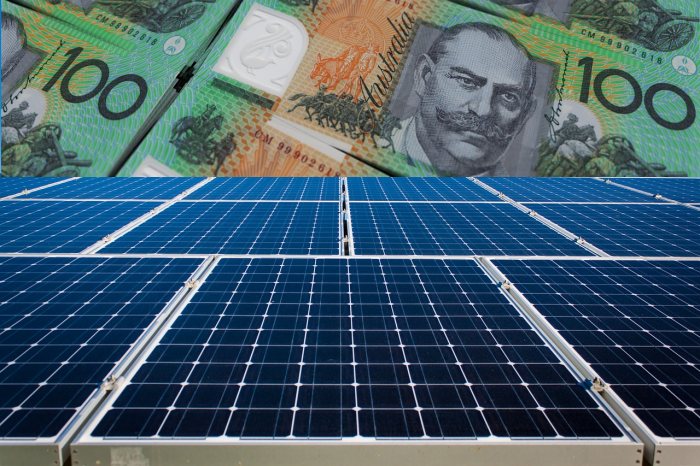
Victoria’s Essential Services Commission (ESC) has set new rates for solar feed-in tariffs from July 2019. The single rate will be boosted, shoulder/off-peak time-varying rates will be increased and the peak rate slashed.
Single Rate Changes
From 1 July this year, the minimum price Victoria’s solar households will receive for the electricity they export to the grid will increase by just over two cents per kilowatt hour to 12 cents (currently 9.9 cents) under the “single” option; i.e. the same rate regardless of the time of the day the electricity is exported. This is the type of feed in tariff most Victorian solar households would be on.
The reason given for the increase:
“The feed-in tariff is based on forecast wholesale electricity prices in the futures market which rose between the draft decision and this final decision,” said the ESC’s Aaron Yuen.
Time-Varying Rate Changes
For time-varying feed in tariffs post-June 30, it’s a mixed bag. These rates are set for different periods of the day and are meant to better reflect the wholesale cost of electricity at the time it is exported into the mains grid. Electricity retailers aren’t compelled to offer a time-varying option as yet and its looking like they won’t be. Retailers can offer a single rate, time-varying rate or a choice between the two.
The ESC wasn’t so keen to point out in its media release is that the minimum peak time-varying tariff rate will drop substantially – however, rates for the other two periods will increase. The following shows the different rates and comparison between the current situation and post-June 30.
| Period | Weekday | Weekend | 2018/19 c/kWh |
2019/20 c/kWh |
| Off peak | 10pm-7am | 10pm-7am | 7.1c | 9.9c |
| Shoulder | 7am- 3pm 9pm-10pm |
7am-10pm | 10.3c | 11.6c |
| Peak | 3pm-9pm | n/a | 29.0c | 14.6c |
Under a time-varying arrangement, most of the electricity exported by a solar power system will receive the shoulder rate of 11.6 cents – an increase of 1.3c per kilowatt-hour. While the off-peak rate isn’t worth throwing a party over given the time of the day it covers, the current 29 cents on weekdays after 3:00 pm under the peak rate was particularly attractive – but that’s been cut by nearly half.
It’s important to note that both the single and time-varying rates are the minimum that can be offered and some electricity retailers already offer a substantially higher single rate. It’s crucial to compare electricity plans carefully as a high feed in tariff rate doesn’t always work out to be the best overall plan for solar owners.

 RSS - Posts
RSS - Posts



Variable FIT are thus far a joke in Victoria…The base rate dropped from 11 to 9 cents last year after the grid kWh price increased 15 per cent…Variable FIT are still entirely optional at the retailers discretion…Watch for another retail price rise!
I agree that the variable FIT is a joke so far. Due to my roof configuration I installed 13 west facing panels, 3 north and 4 east. When the 29c peak tariff was announced I got pretty excited! But do you think I could find a retailer which offered the variable tariff? No – so what was the point? At least my retailer continued to offer 11.8c on the single tariff rather than the minimum of 11.3 (I think)
Is it possible to isolate your system from the grid during peak periods? It seems to me that this must be when the feed in is of most value to the energy producer so by not supplying during that period more black outs will be necessary. Maybe the feed in rate should be set as a percentage of the wholesale price charged by generators to retailers. As the generator increases the supply charge so the feed in rate increases!
The feed-in-rate *is* based on wholesale prices – the actual wholesale price, plus other market fees and charges that retailers would have to pay if they bought the energy in the usual way. (it also, controversially, includes an allowance for carbon abatement that probably double-counts the abatement already counted in the STC rebate given when systems are purchased.) But it’s based on the average over the time period for the year, it doesn’t change every half hour based on current wholesale price because that would be expensive to implement and complicated for most households to understand (and, importantly, to make decisions about how much to invest in a system)